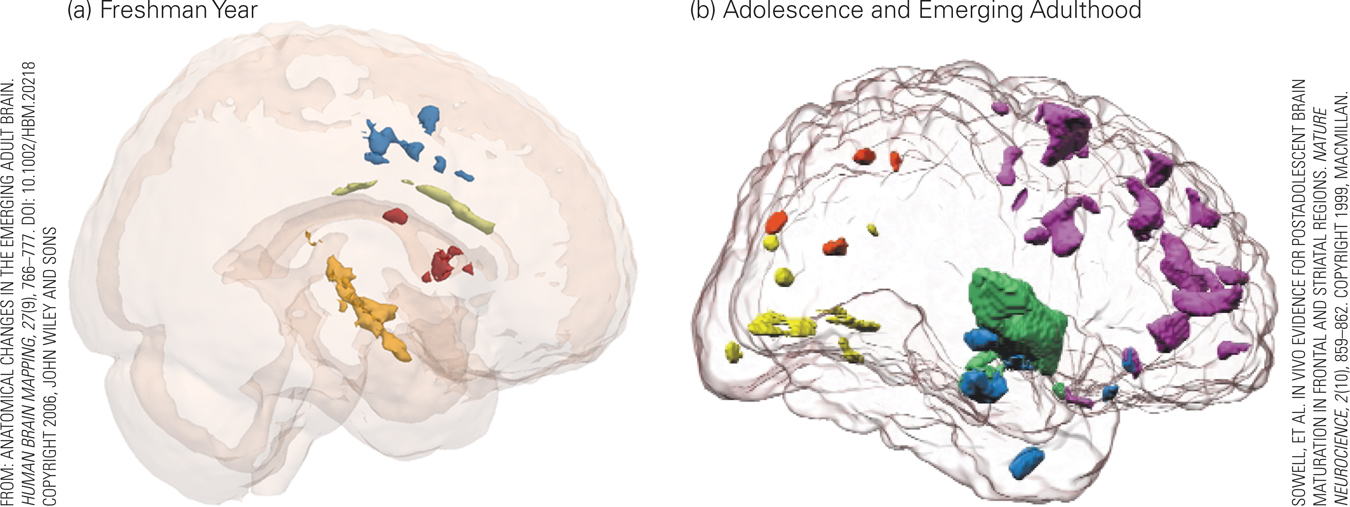 Thinking Away from Home (a) Entering a residential college means experiencing new foods, new friends, and new neurons. A longitudinal study of 18-year-old students at the beginning and end of their first year in college (Dartmouth) found increases in the brain areas that integrate emotion and cognition—namely, the cingulate (blue and yellow), caudate (red), and insula (orange). Researchers also studied one-year changes in the brains of students over age 25 at the same college and found no dramatic growth. (b) Shown here are the areas of change in one person’s brain from age 14 to 25. The frontal cortex (purple) demonstrated many changes in particular parts, as did the areas for processing speech (green and blue)—a crucial aspect of young adult learning. Areas for visual processing (yellow) showed less change. Neuroscience reveals that brains mature in many ways between adolescence and adulthood; scientists are not yet sure of the cognitive implications.
Thinking Away from Home (a) Entering a residential college means experiencing new foods, new friends, and new neurons. A longitudinal study of 18-year-old students at the beginning and end of their first year in college (Dartmouth) found increases in the brain areas that integrate emotion and cognition—namely, the cingulate (blue and yellow), caudate (red), and insula (orange). Researchers also studied one-year changes in the brains of students over age 25 at the same college and found no dramatic growth. (b) Shown here are the areas of change in one person’s brain from age 14 to 25. The frontal cortex (purple) demonstrated many changes in particular parts, as did the areas for processing speech (green and blue)—a crucial aspect of young adult learning. Areas for visual processing (yellow) showed less change. Neuroscience reveals that brains mature in many ways between adolescence and adulthood; scientists are not yet sure of the cognitive implications.

